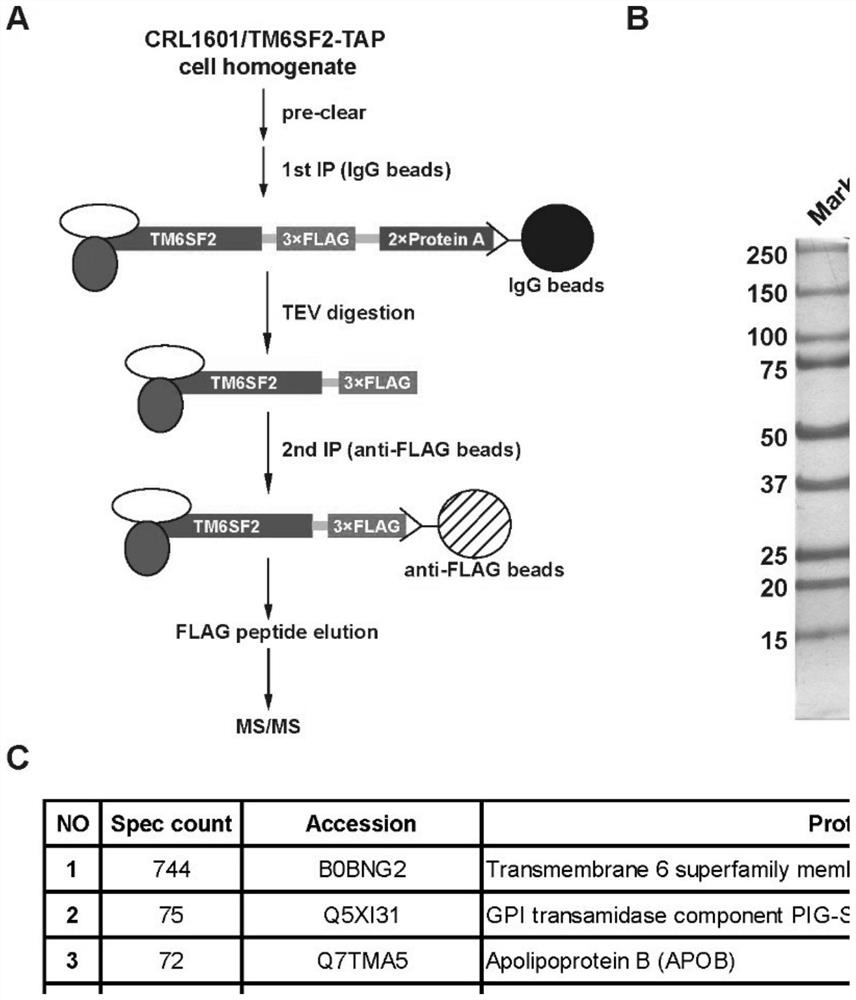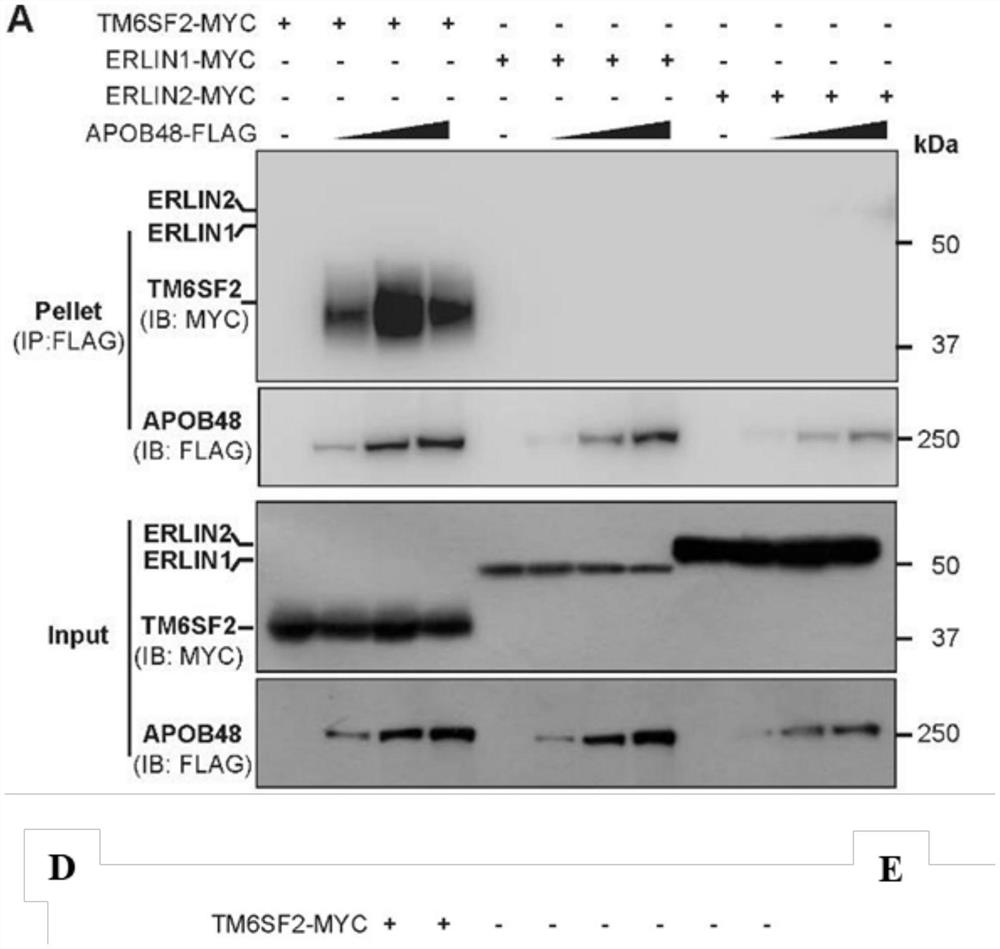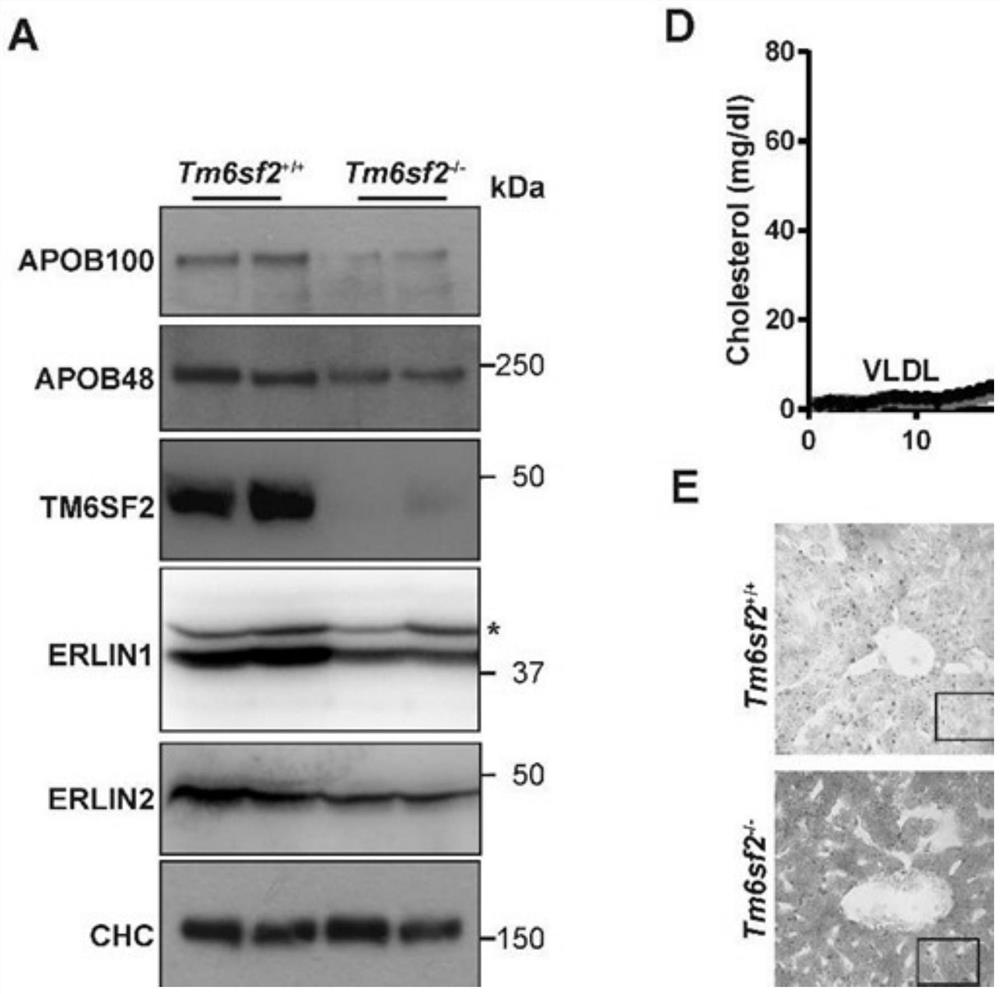Applications of transmembrane protein, endoplasmic reticulum liporaft proteins or antagonists or inhibitors of coding genes thereof
A technology that encodes genes and transmembrane proteins, and is applied in the field of transmembrane protein 6 family member 2 proteins to achieve the effect of reducing blood lipids and promoting the decline of levels
- Summary
- Abstract
- Description
- Claims
- Application Information
AI Technical Summary
Problems solved by technology
Method used
Image
Examples
Embodiment Construction
[0043] In order to facilitate those skilled in the art to understand and implement the present invention, the present invention will be described in further detail below in conjunction with the accompanying drawings. It should be understood that the implementation examples described here are only used to illustrate and explain the present invention, and are not intended to limit the present invention.
[0044] Such as figure 1 As shown, TM6SF2 interacting proteins were screened using multi-step affinity purification coupled with tandem mass spectrometry
[0045] A. The multi-step affinity purification coupled mass spectrometry method is shown in the figure;
[0046] B. Add part of the concentrate after multi-step affinity purification (TAP) of the experimental group and the control group to 4-20% gradient gel, and use Coomassie Brilliant Blue to stain the protein after running the gel. The combined TM6SF2-TAP protein band is shown in the figure shown;
[0047] C. Screen the ...
PUM
 Login to View More
Login to View More Abstract
Description
Claims
Application Information
 Login to View More
Login to View More - R&D
- Intellectual Property
- Life Sciences
- Materials
- Tech Scout
- Unparalleled Data Quality
- Higher Quality Content
- 60% Fewer Hallucinations
Browse by: Latest US Patents, China's latest patents, Technical Efficacy Thesaurus, Application Domain, Technology Topic, Popular Technical Reports.
© 2025 PatSnap. All rights reserved.Legal|Privacy policy|Modern Slavery Act Transparency Statement|Sitemap|About US| Contact US: help@patsnap.com



